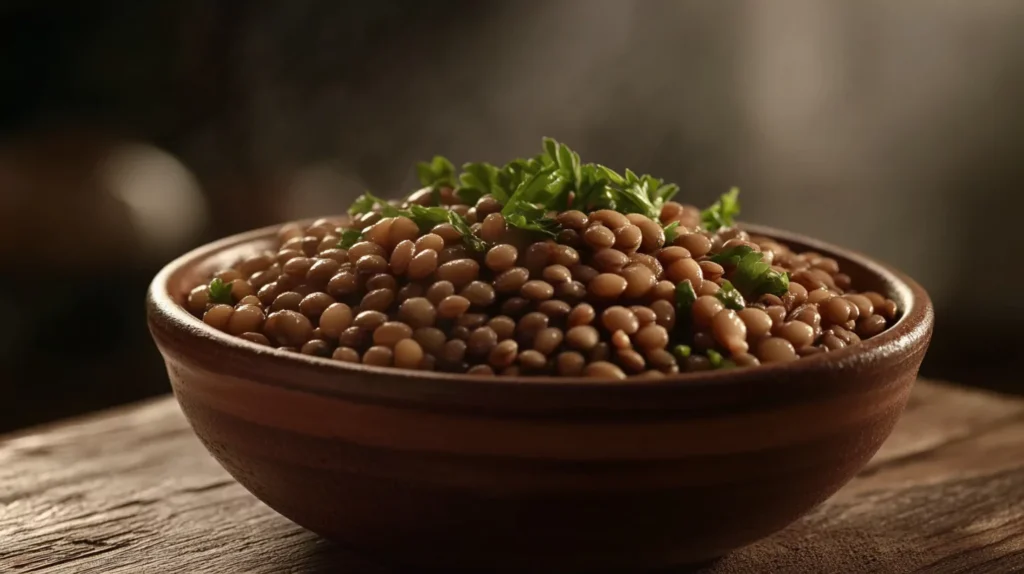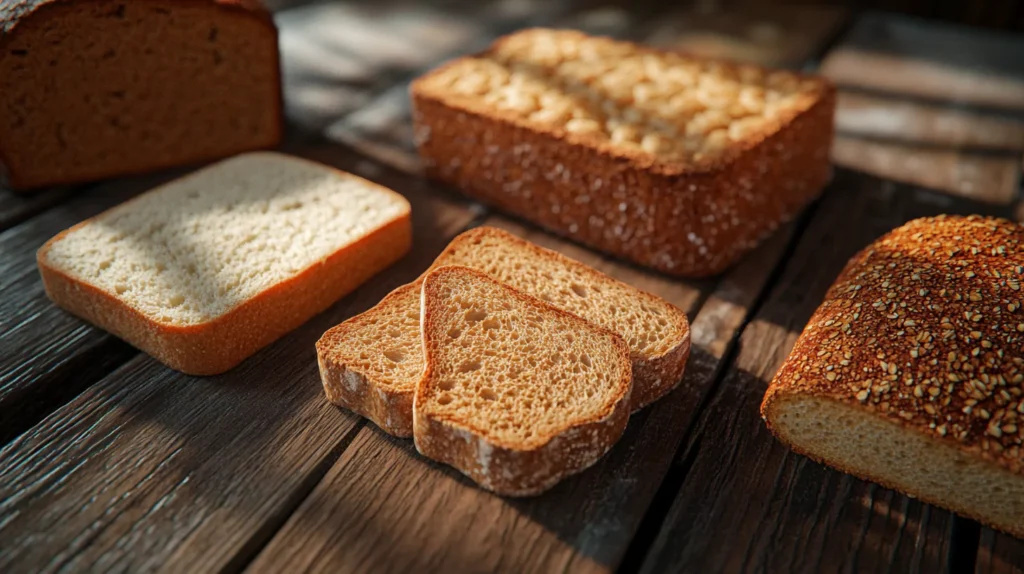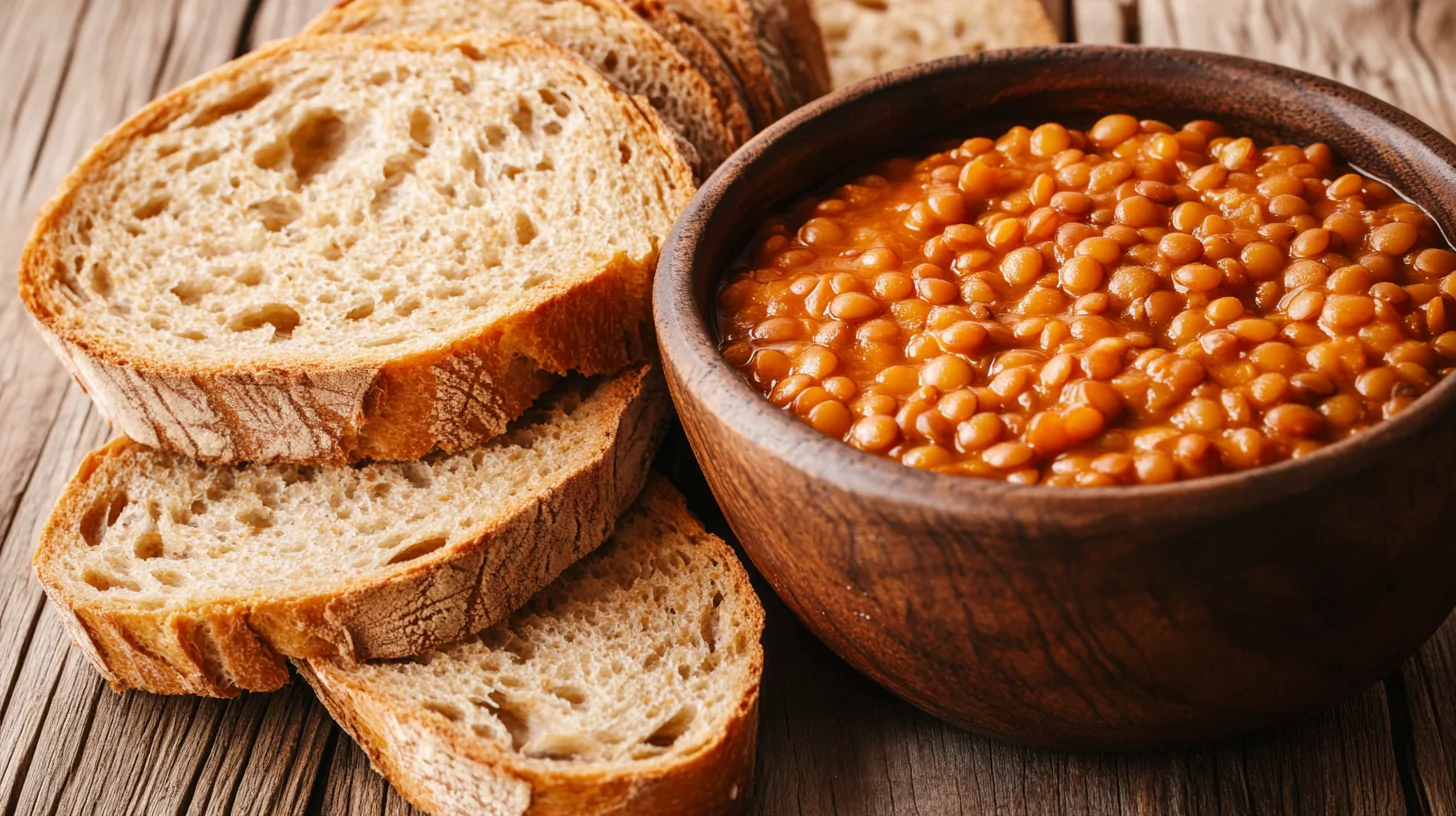When it comes to nutrition and health, choosing the right food can make a significant difference in your overall well-being. Lentils and bread are both staple foods consumed across the globe, but they serve different purposes in a balanced diet. While bread, especially whole-grain varieties, is known for being a quick source of carbohydrates and energy, lentils are celebrated for their high protein and nutrient content. But are lentils healthier than bread?
This article dives deep into the nutritional profiles, health benefits, and key differences between lentils and bread, helping you make an informed choice about which one best fits your health goals.
Nutritional Profile of Lentils

Are Lentils Healthier Than Bread in Terms of Protein and Carbs?
Lentils are a powerhouse of nutrients, especially for those seeking a plant-based source of protein. A 100-gram serving of cooked lentils contains approximately:
- Calories: 116 kcal
- Protein: 9 grams
- Carbohydrates: 20 grams
- Fiber: 8 grams
- Fat: 0.4 grams
What sets lentils apart is their high protein content compared to other plant-based foods. Unlike bread, lentils are a low-fat, high-fiber food, which makes them perfect for improving digestion and promoting satiety. They also have a moderate amount of carbohydrates, but the presence of complex carbs ensures a slower release of energy, preventing blood sugar spikes.
Micronutrients: Vitamins and Minerals
Lentils are rich in essential vitamins and minerals that contribute to overall health. Some of the key nutrients found in lentils include:
- Iron: Essential for preventing anemia and improving oxygen transport.
- Folate: Supports cell regeneration, especially important during pregnancy.
- Magnesium: Promotes heart health and reduces inflammation.
- Potassium: Helps regulate blood pressure and fluid balance.
- Zinc: Boosts immune function and promotes healing.
The combination of these micronutrients makes lentils a nutrient-dense food that goes beyond just protein and carbs. For vegetarians and vegans, lentils are a go-to source for meeting daily nutritional requirements.
Health Benefits of Lentils
Lentils offer a wide range of health benefits due to their nutrient profile:
- Heart Health: The high fiber content helps lower cholesterol levels, reducing the risk of cardiovascular diseases.
- Digestive Health: Lentils’ soluble and insoluble fiber supports regular bowel movements and gut health.
- Weight Management: Lentils promote satiety due to their protein and fiber, reducing overeating.
- Blood Sugar Control: With a low glycemic index (GI), lentils help manage blood sugar levels, making them suitable for diabetics.
- Muscle Recovery: The protein content aids muscle repair and growth, especially for those with an active lifestyle.
Overall, lentils are a nutrient-dense, versatile food with a low-calorie count, making them ideal for most diets.
Nutritional Profile of Bread

Types of Bread: White, Whole Grain, and Others
Bread is a staple food in many cultures and comes in various types, each offering different nutritional values:
- White Bread: Made from refined flour, white bread is soft but lacks fiber and essential nutrients due to processing.
- Whole-Grain Bread: This variety contains the entire grain kernel, including the bran, germ, and endosperm, making it higher in fiber and nutrients.
- Sourdough Bread: Fermented bread that improves digestion and has a lower glycemic index.
- Rye Bread: A denser bread made from rye flour, often richer in fiber and nutrients than white bread.
- Gluten-Free Bread: Designed for those with gluten intolerance, though often lower in fiber and protein compared to traditional breads.
Macros and Micronutrients in Bread
The nutritional profile of bread varies depending on the type. A standard 100-gram serving of whole-grain bread provides:
- Calories: 247 kcal
- Protein: 9 grams
- Carbohydrates: 41 grams
- Fiber: 7 grams
- Fat: 2 grams
Whole-grain bread is a good source of complex carbohydrates and provides a moderate amount of fiber and protein. Additionally, bread is often fortified with essential vitamins and minerals, such as:
- B Vitamins: Including niacin, thiamine, and riboflavin, which support energy production.
- Iron: Important for maintaining healthy blood.
- Calcium: Strengthens bones and teeth.
However, the nutrient content can vary significantly. White bread, for example, has fewer vitamins, minerals, and fiber compared to whole-grain varieties.
Health Benefits of Different Types of Bread
Bread offers several health benefits, particularly when opting for whole-grain or nutrient-dense varieties:
- Energy Source: Bread provides quick energy due to its carbohydrate content, making it ideal for active individuals.
- Digestive Support: Whole-grain and rye bread improve digestion due to their high fiber content.
- Nutrient Fortification: Many breads are fortified with vitamins and minerals, filling dietary gaps.
- Convenience and Versatility: Bread is easy to prepare and pairs well with various nutritious toppings and meals.
While bread can be a healthy choice, its health benefits are highly dependent on the type you choose. Whole-grain and rye breads are far superior to refined white bread when it comes to nutrition.
Comparing Lentils and Bread
Lentils vs Bread: Caloric Density and Protein Content
One of the key differences between lentils and bread lies in their caloric density and protein content.
- Caloric Density: Lentils are lower in calories compared to most breads. A 100-gram serving of cooked lentils contains around 116 calories, while the same amount of whole-grain bread delivers approximately 247 calories. White bread has even more calories without offering substantial nutrients.
- Protein Content: Lentils stand out as an excellent source of plant-based protein, with around 9 grams per 100 grams. Bread, even whole-grain varieties, contains about the same amount of protein but lacks the additional fiber and nutrients present in lentils.
For individuals focused on calorie control, weight loss, or increasing protein intake without excess calories, lentils are a healthier option compared to bread.
Impact on Blood Sugar (Glycemic Index)
The Glycemic Index (GI) measures how quickly a food raises blood sugar levels. This is particularly important for individuals managing diabetes or those who want to avoid blood sugar spikes.
- Lentils: Lentils have a low GI of around 32-42, depending on the variety. This means they release energy slowly, keeping blood sugar levels stable and promoting satiety.
- Bread: The GI of bread varies significantly:
- White bread has a high GI of around 70-85, causing rapid blood sugar spikes.
- Whole-grain bread has a moderate GI of around 55-60, making it a better option than white bread.
- Sourdough and rye breads have a lower GI than white bread due to their fermentation process and high fiber content.
When it comes to blood sugar control, lentils are clearly superior to most types of bread, particularly refined ones.
Fiber Content: Digestion and Satiety
Fiber plays a critical role in supporting digestion, regulating blood sugar, and promoting satiety (the feeling of fullness).
- Lentils: Lentils contain 8 grams of fiber per 100 grams, making them a fiber powerhouse. Their high fiber content helps regulate bowel movements, supports gut health, and keeps you full for longer.
- Whole-Grain Bread: Whole-grain bread provides 7 grams of fiber per 100 grams, which is still substantial but slightly lower than lentils. On the other hand, white bread contains very little fiber (about 1 gram per 100 grams).
Lentils provide more fiber per calorie compared to bread, making them a better option for digestive health and weight management.
Health Considerations

Allergies and Digestive Tolerance
Both lentils and bread have potential considerations when it comes to allergies or intolerances:
- Lentils: While lentils are naturally gluten-free, some individuals may experience digestive discomfort due to their high fiber content and naturally occurring compounds like lectins. Soaking or cooking lentils properly can reduce these effects.
- Bread: Gluten, found in most traditional breads, is a common allergen. People with celiac disease or gluten intolerance must avoid bread made with wheat, rye, or barley. Even gluten-free breads may lack the fiber and nutrients found in lentils.
If digestive issues are a concern, lentils can be a better alternative to bread for many individuals.
Suitability for Weight Management
Both lentils and bread can fit into a weight management plan, but lentils have a clear advantage:
- Lentils: Lentils are low in calories, high in protein, and rich in fiber. These properties make them extremely filling and ideal for reducing calorie intake while maintaining satiety.
- Bread: While whole-grain bread provides nutrients and fiber, it is more calorie-dense than lentils. White bread, in particular, offers little satiety and can contribute to overeating.
For those focused on losing or maintaining weight, lentils are a more nutrient-dense and satisfying option compared to bread.
Lentils and Bread in Special Diets
Different diets have varying guidelines regarding lentils and bread:
- Low-Carb Diets: Lentils contain moderate carbs, but they are complex carbohydrates that provide fiber and protein. Bread, especially refined types, is usually excluded due to its high carbohydrate content.
- Gluten-Free Diets: Lentils are naturally gluten-free, making them a safe choice for those with celiac disease or gluten sensitivity. Gluten-free bread is an option but often lacks fiber and protein.
- Vegan and Vegetarian Diets: Lentils are a critical source of plant-based protein for vegetarians and vegans. Bread can also contribute to protein intake, but lentils offer more nutrients overall.
For most dietary needs, lentils emerge as a versatile and healthier option compared to bread.
FAQs
Are lentils a good replacement for bread?
Yes, lentils can be an excellent replacement for bread, especially if you are looking for a food that is higher in protein, fiber, and essential nutrients. Lentils are more nutrient-dense than most types of bread and provide long-lasting energy without causing rapid blood sugar spikes. For individuals on a gluten-free or low-calorie diet, lentils are a perfect substitute for bread.
Which is better for weight loss?
Lentils are generally better for weight loss than bread. This is because lentils are lower in calories, higher in fiber, and richer in protein, which helps you feel full for longer. Bread, particularly white bread, is more calorie-dense and less filling, leading to a higher likelihood of overeating. Whole-grain bread is a healthier alternative but still contains more calories per serving than lentils.
Do lentils provide more energy than bread?
Lentils and bread both provide energy, but in different ways. Bread, particularly white bread, offers quick energy due to its high carbohydrate content and high glycemic index. Lentils, on the other hand, provide a slower, more sustained release of energy thanks to their complex carbohydrates and low glycemic index. This makes lentils a better option for maintaining stable energy levels throughout the day.
Is whole-grain bread as healthy as lentils?
Whole-grain bread is significantly healthier than refined white bread, as it contains more fiber, vitamins, and minerals. However, lentils still have a nutritional edge over whole-grain bread. Lentils provide more protein, fiber, and a broader range of vitamins and minerals, including iron, folate, and magnesium. For individuals looking for plant-based protein and lower calorie intake, lentils remain the superior choice.
Are lentils suitable for a low-carb diet?
Lentils are not considered low-carb, as they contain 20 grams of carbohydrates per 100 grams. However, most of these carbohydrates are complex carbs and fiber, which do not spike blood sugar as quickly as simple carbs found in bread. While lentils may not fit strict ketogenic diets, they can be included in moderate low-carb diets due to their nutrient density and ability to promote satiety.
Can you combine lentils and bread for a meal?
Yes, lentils and bread can be combined to create a nutritious, balanced meal. Pairing lentils with whole-grain bread can provide a complete source of protein, particularly for vegetarians and vegans. This combination also ensures a good mix of carbohydrates, fiber, and essential nutrients to keep you energized and satisfied. For example, a bowl of lentil soup served with a slice of whole-grain bread makes for a hearty and healthy meal.
Conclusion

When comparing lentils and bread, are lentils healthier than bread? The answer is clear: lentils come out ahead as the healthier option. They are lower in calories, higher in protein and fiber, and packed with essential vitamins and minerals. Lentils also have a low glycemic index, making them a better choice for blood sugar control and sustained energy. Bread, especially whole-grain varieties, can still be a nutritious part of your diet, but it lacks the nutrient density and health benefits offered by lentils.
For individuals looking to lose weight, improve their digestion, or follow a nutrient-rich diet, are lentils healthier than bread? Absolutely. Lentils are a superior choice. However, the combination of lentils and whole-grain bread can provide a balanced and satisfying meal, delivering a mix of macronutrients and essential minerals. If you’re looking for a creative way to enjoy both, try this lentil bread recipe — it’s gluten-free, vegan, and packed with protein for a healthy, nutritious option.
Ultimately, the choice depends on your dietary needs and preferences, but when it comes to overall health, are lentils healthier than bread? The answer is yes: lentils are the clear winner.

